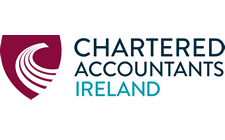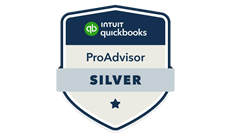Are you completing the outputs box correctly?
HMRC’s computer checks that the outputs and inputs boxes on your VAT returns appear credible. How can you reduce the risk of an HMRC compliance query due to problems with your Box 6 outputs figure?

Outputs to output tax ratio
Even though you now submit your returns to HMRC electronically, it’s important to carry out basic checks of the figures to ensure they are consistent with your trading activity for the period in question.
The first important check is to confirm that your outputs figure in Box 6 multiplied by 20% is equal to the Box 1 output tax figure if all your sales are standard-rated. If not, this means that you are likely to have zero-rated or exempt sales, which would distort the ratio. If you have zero-rated or exempt sales, your Box 6 figure multiplied by 20% should be more than the output tax entry in Box 1.
If you cannot explain any imbalance between Box 1 and Box 6, you have probably over or underpaid VAT so should carry out further checks before submitting the return.
International services
Most services that you supply to non-UK business customers are not subject to VAT because the place of supply is where your customer has their business, i.e. the sales are outside the scope of VAT. However, you still include these sales in Box 6.
Many business-to-consumer sales of professional services are also outside the scope of VAT but the same principle applies, i.e. you also include them in Box 6.
Goods not in UK
One of our clients purchased some high-value goods in China and shipped them directly to an American customer where they were sold to a corporate customer based there. The correct treatment for our subscriber is that these sales must still be included on their UK VAT return, even though the goods were never in the UK.
The purchase price paid to the Chinese supplier will be recorded in Box 7, with the sale to the American customer included as an output in Box 6.
Our client must also consider if there are any tax or duty issues to deal with in both China and America.
Bank interest received
With rising interest rates, your business might be earning investment income from, say, bank deposit accounts. This interest is exempt from VAT. However, exempt and zero-rated income is included in Box 6 of your return.
Check that you have included any fixed asset sales in Box 6, even if no VAT was charged on the deal, e.g. the sale of a motor car.
What about past errors?
If you have excluded sales from Box 6 of your past returns, or made a major error in the calculations, you will not be charged a penalty by HMRC. This is because it is a values box only and you have not underpaid VAT. However, HMRC’s computer carries out automatic credibility checks of all boxes, so it is important to notify it of a large error as soon as you discover it.
Related Topics
-
Planning ahead for pension salary sacrifice changes
From 6 April 2029, both employers and employees will be required to pay Class 1 NI on pension contributions in excess of £2,000 made through a salary sacrifice arrangement. What can you do about it?
-
Marginal relief - responding to an HMRC nudge letter
HMRC is running a campaign to clamp down on incorrect claims for corporation tax marginal relief (MR). In what circumstances might you be challenged by HMRC and how should you respond?
-
Can you claim input tax on costs linked to electric cars?
Your business intends to go green and buy new electric cars. Can you claim input tax on the purchase of the vehicles and their subsequent fuel costs? Additionally, what recent change has been announced by HMRC?




 This website uses both its own and third-party cookies to analyze our services and navigation on our website in order to improve its contents (analytical purposes: measure visits and sources of web traffic). The legal basis is the consent of the user, except in the case of basic cookies, which are essential to navigate this website.
This website uses both its own and third-party cookies to analyze our services and navigation on our website in order to improve its contents (analytical purposes: measure visits and sources of web traffic). The legal basis is the consent of the user, except in the case of basic cookies, which are essential to navigate this website.